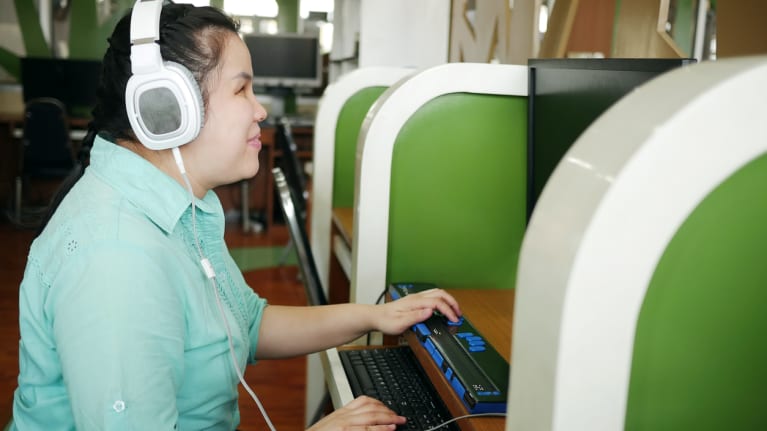

?Diversity, equity, inclusion and belonging are at the core of all we do, so accessibility must be part of all conversations, including learning and development. It is imperative that all learners have access to education and learning, so that everyone has the same opportunities to grow in their career. Learning and development professionals should focus on accessibility in design and development to provide more equitable and inclusive learning experiences, which ensures compliance, increases skill levels, and positively impacts culture and the bottom line.
Ensure Compliance
At a minimum, workplaces need to offer content that is compliant with the Americans with Disabilities Act (ADA) and, if applicable, Section 508 of the amended Rehabilitation Act of 1973. There is a bit of a distinction when you think about in-person versus digital content; however, most content today will have some type of digital or hybrid component. It is critical that all employers know they are responsible for implementing and maintaining the minimum standards to ensure compliance. In-person facilitation delivered in a physical place must adhere to ADA guidelines. When thinking about digital or Web-based content, the Web Content Accessibility Guidelines (WCAG) are used as the recognized guidance on how to make Web content more accessible to people with disabilities.
Another important area of distinction is whether the learning experiences offer accessible features proactively or reactively. The proactive approach is when the accessible features are included in the design and development of the learning experiences (e.g., closed captioning). The reactive approach is when a worker submits an accessibility request detailing their specific needs, and the accommodations are implemented before the learning experience commences for that individual. While both approaches demonstrate compliance, the accessible, proactive design approach saves you time and effort while benefiting the largest number of learners. This approach also maximizes the chance of everyone being able to properly use a product and gain access to the content quickly.
Equitable Learning Experiences
Organizations continue to focus on having a diverse, equitable and inclusive workplace where workers can feel a sense of belonging. These actions will continue to bring diversity across the workplace, including into the ways we consume learning. It is critical to ensure your learning efforts are aligned to be equitable and accessible to all. Accessibility affects everyone.
Education experts, such as instructional designers, already think about the various learning styles and how to offer content to suit these differences. Accessibility is another factor to consider. Instructional designers can create accessible content to ensure an equitable and inclusive learning experience from the beginning by being familiar with the WCAG guidelines and ensuring features such as closed captioning, transcripts, appropriate color contrast, alternative text on images and appropriately tagged reading order are provided to all. It is critical to design with the end in mind to prevent significant amounts of rework as you get closer to the final product. Don’t worry, creativity does not have to be stifled when creating accessible content. It just requires forethought and planning.
Including accessibility features during the development process has countless benefits, such as providing equitable and inclusive access for all, eliminating the need for workers to disclose their differently-abled statuses, reducing the burden of making the requests, reducing the volume of accommodation requests, and growing a feeling of inclusion and belonging within the workplace.
Start Where You Are
It’s not realistic for organizations to include all accessibility features overnight, but an intentional road map should be determined of when and how to implement features such as closed captioning, transcripts, American Sign Language interpreters, extended time for assessments, and materials that work well with screen readers, just to name a few. Review the WCAG and become familiar with the guidelines and how they are implemented in education. Collaborate with accessibility experts who align with the platforms you use for learning. There is plenty of education, upskilling and outsourcing support to help you at whatever level you need. There are even free software and checker tools, which are a good place to start, but keep searching, as there are many vendors that have tools specific to programs that will help reduce your time creating accessible materials.
The most important takeaway is to start. We can and should do better than the minimum standards to foster a culture of inclusion and mitigate the risk of lawsuits—but mostly we should go beyond the minimum requirements because it’s the right thing to do. When you include accessible features in the development of your learning experiences, it will reduce reactive accommodation requests and garner the respect of your workers, as they will be aware of the importance of the accessibility initiatives in your organization. Start now. Start where you are as a workplace. Start designing equitable learning experiences. Start doing better for your workers.
Carolyn Barley is lead, instructional design, SHRM education.

